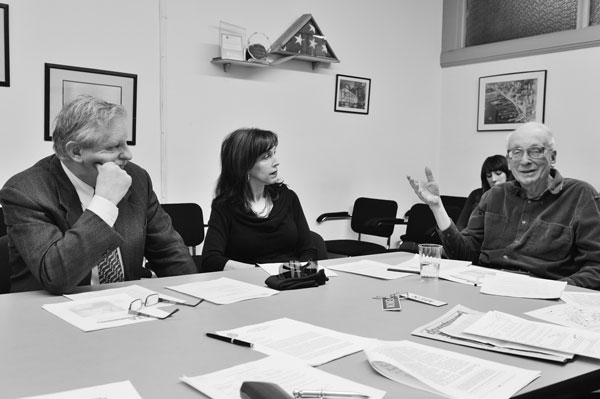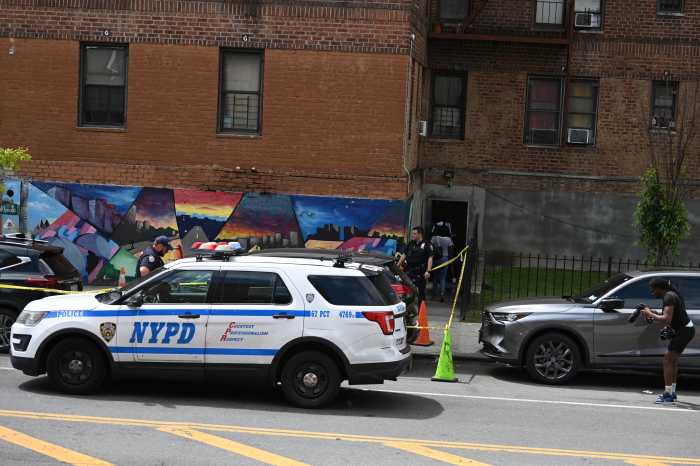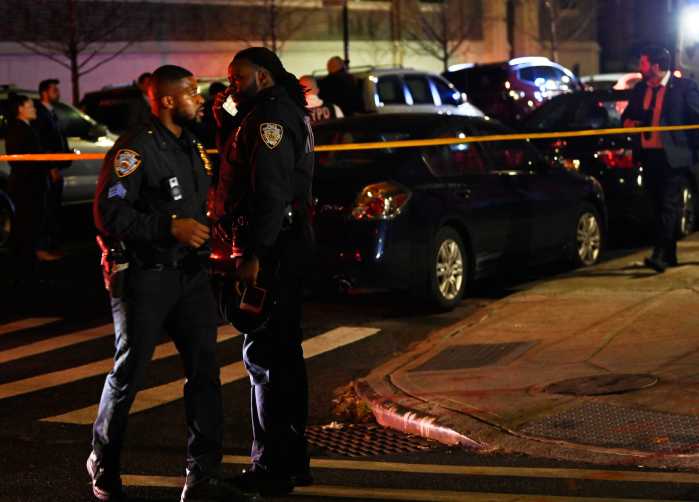
BY LINCOLN ANDERSON | As anxious Downtowners stuck in the dark continued to be left in the dark about when power would be restored, on Thursday morning Con Edison reported that electricity would be turned back on by sometime this Saturday. Later in the day, a Con Ed spokesperson told this paper that the lights would be back on by 11 p.m. Saturday. Similarly, Downtown residents whose land lines were still working or who had cell phone power and access reported that they had received robo-calls on Thursday from Con Ed informing that the juice would be switched back on by 11 p.m. Saturday.
A Con Ed spokesperson said two adjacent “electrical networks” near Wall St. – serving about 6,500 customers — would actually be getting power back a day earlier, on Friday.
Flooding in the East Village on Monday night during Hurricane Sandy had spread almost all the way to Avenue B, and Avenue C was a river more than waist-high. The Con Ed power plant on E. 14th St., couldn’t handle it, and the salt water inundation caused an explosion, knocking the plant offline and crippling Lower Manhattan.
“Con Ed is prepared to handle a storm surge of 12 feet 6 inches,” said Allan Drury, a spokesperson for the utility company. “That would have been a foot and a half higher than any surge in the history of Manhattan.”
In fact, what had been forecast was a surge of 10 to 12 feet, “which would have been a major threat to us,” Drury admitted. “The storm surge from Hurricane Irene was 9.5 feet. The storm surge on Monday night [which was 14 feet] exceeded all forecasts.”
Although power was slated to come back Saturday evening, Drury said if customers’ electrical equipment had been too badly damaged by the storm, their lights wouldn’t go back on, and that they’d have to hire an electrician to fix the problem. As of Thursday, he said, 130 buildings in the Downtown and Lower Manhattan area had damaged electrical systems and so wouldn’t be able to have power over the weekend – but there were also anecdotal accounts that many building owners throughout the area were not reporting problems so that they could make fixes without going through bureaucratic red tape.
Meanwhile, longtime Chelsea activist Bob Trentlyon obviously wasn’t happy that the disaster had occurred, but he and other advocates of storm-surge barriers for New York City felt vindicated in their belief. He spoke in a phone interview on Wednesday from outside the blackout zone — from the Upper West Side, where he and his wife, Betty, were staying with longtime friend Betty Mosedale.
The former publisher of The Westsider and Chelsea Clinton News weekly newspapers, Trentlyon was an early proponent of creating the Hudson River Park along the waterfront. He served for many years on Community Board 4. Now his interest in the waterfront has led him to champion a new issue – trying to protect the city from the calamatous effects of climate change due to the rising sea level.
“I reached the conclusion about three years ago that what the city is doing is very good – reducing the amount of carbon,” he said, “but the city doesn’t have any plans that will protect us from the sea rise. The sea rise is going to be happening. Greenland will keep melting. We have to do something similar to what is being done in London, Venice, St. Petersburg. Of 140 ports in the world, we’re number five in terms of vulnerability to storm surge. C’mon, we’re gonna get hit.
“Irene moved away at the last minute – we were lucky. And less than a year later – we get hit,” Trentlyon said. “We’re wasting time, we’re losing time, and the sooner we do it, the better we’ll be. I think the city has to take this seriously and call on the Army Corps of Engineers to study it, come up with a plan that they’re going to do, and do it. Another benefit — this would be a massive public works project, and there’s a need for jobs right now.”
If the surge barriers aren’t built, on the other hand, it would have a devastating effect for the city’s economy, Trentlyon warned.
“If you keep having these, do you expect Wall St. to stay in New York — if they have to keep closing down every year or five years?” he asked. “We’d be cutting our own throat. These storms are going to be more and more, and bigger and bigger.”
Surge barriers are massive underwater gates that can be opened and closed and lowered and raised to hold back the raging waters during hurricanes. Two different plans – one by a Dutch expert and one by a British expert — propose installing the structures at key points, either a combination of three separate gates at the Verrazano Narrows, the Arthur Kill and Throgs Neck or one long gate between Sandy Hook and the Rockaways, plus a gate at Throgs Neck. The price tag was estimated at $10 billion a few years ago, for both the studies and construction.
Trentlyon has found support for his views on Community Boards 1, 2 and 4, and from local politicians, notably state Senator Tom Duane, Assemblymember Richard Gottfried, Borough President Scott Stringer, Congressmember Jerrold Nadler and Councilmember Jessica Lappin, but so far Mayor Bloomberg hasn’t seemed interested.
At a press conference on Thursday, Bloomberg, citing the enormous cost of adding storm-surge barriers in a place “where you have an enormous harbor, like we do,” said he didn’t really think the city was ready to take that step.
“We don’t know what the mayor’s thinking about,” Trentlyon said. “He’s keeping it close to his vest. I think the mayor isn’t ready to say, ‘We should have done something sooner.’ ”
Meanwhile, as Trentlyon was evacuating from Chelsea after the hurricane, friends greeted him on the street, saying, “You were right!” and “We should have done it!”
While he admitted that’s good for his ego, he said the bigger issue, clearly, is whether the city and state will face up to the fact that something has to be done before another hurricane slams the city again — with maybe even more devastating results than what Lower Manhattan, other parts of the city and the region just suffered. A hit of that level is hard to imagine – but Trentlyon has imagined it – and he has seen a way to prevent it. If only the city administration would listen to him.




































